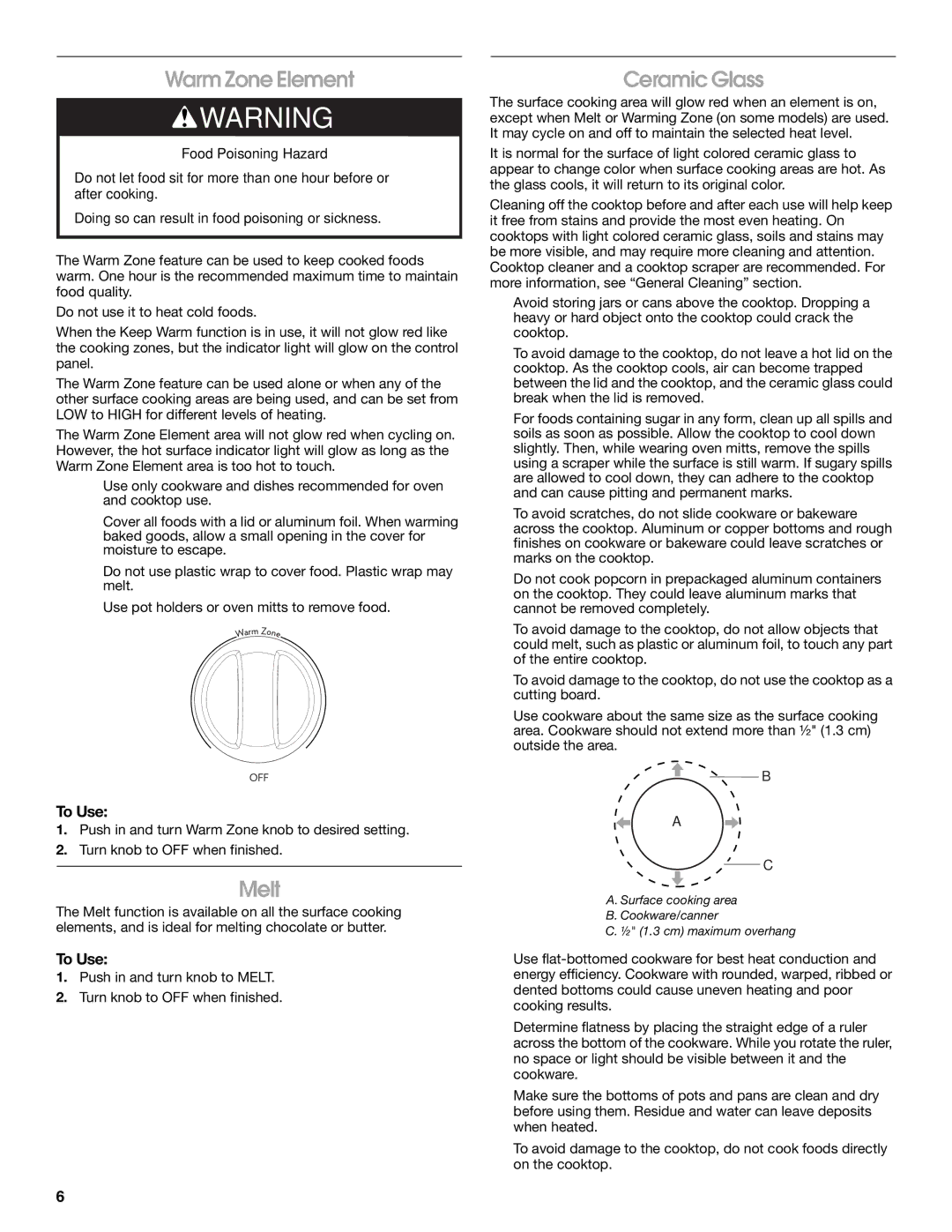W10197056B specifications
The Jenn-Air W10197056B is a high-quality appliance designed to elevate the culinary experience in modern kitchens. Known for its innovative features and sleek design, this appliance is engineered to offer convenience and efficiency, making it a coveted addition for home chefs and cooking enthusiasts alike.One of the main features of the Jenn-Air W10197056B is its advanced temperature control system. This system ensures precise cooking temperatures, allowing users to achieve the perfect consistency in their dishes every time. The appliance is equipped with smart sensors that monitor cooking conditions and adjust settings automatically, ensuring optimal performance without constant supervision.
Another notable characteristic of the W10197056B is its versatile cooking capabilities. With multiple cooking modes, including baking, broiling, and roasting, this appliance can handle a variety of recipes with ease. The intuitive interface allows users to select the desired cooking mode and set the timer effortlessly, making it user-friendly for individuals of all skill levels.
In addition to its impressive cooking functionalities, the Jenn-Air W10197056B incorporates innovative technologies that enhance its performance. The convection cooking feature circulates heated air throughout the oven, promoting even cooking and browning. This technology is particularly beneficial for baking, as it allows for consistent results across multiple racks.
The design of the Jenn-Air W10197056B is another key aspect that sets it apart. Its sleek stainless steel finish not only adds a touch of sophistication to any kitchen but is also easy to clean and maintain. The smooth glass door provides a clear view of the cooking progress, allowing users to monitor their dishes without opening the appliance and disrupting the cooking environment.
Energy efficiency is also a priority with the Jenn-Air W10197056B. Designed to meet or exceed energy consumption standards, this appliance not only helps reduce utility bills but also contributes to a more sustainable kitchen.
In summary, the Jenn-Air W10197056B combines innovative features, versatile cooking options, and a sleek design to create a dependable kitchen appliance that meets the needs of modern home chefs. Its advanced temperature control, user-friendly interface, and energy-efficient technology make it an ideal choice for anyone looking to elevate their culinary creations.

